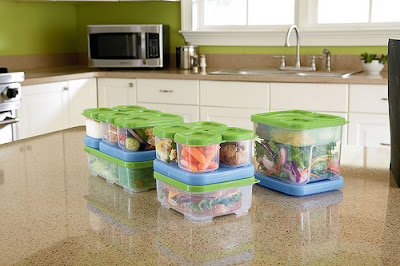Freshness In the Kitchen
For
all of the food lovers who like to experiment with new recipes in their own
kitchens, the digital age is bringing more resources from the culinary world,
where more and more home cooks and experienced chefs alike are able to easily
learn from others online, on television, or at public cooking events. There is
a big focus on information sharing, as well as other trends in food culture
that are worth looking at.
One
of these trends that comes along with the emergence of organic and natural
foods is the idea that food used in the kitchen should be as fresh as possible.
Here are some basic tips experts suggest for cooking with fresher ingredients
for every recipe.
Keep Oils and Spices
Cool, Dry and Dark
One
important tip for any cook is to keep items like vegetable oil or other
essential oils in places that help to preserve their natural chemistry. This
means keeping them away from excessive heat or sunlight. With powdered spices,
humidity or heat can be a problem. Putting these ingredients away in specific
storage areas can help them last longer and provide more flavorful foods.
Seal Multi-use Food
Containers
Another
idea that goes along with the above is that cooks should take time to seal any
opened containers for storage. One example is to use the handy small tools
available for wine bottles after uncorking a nice red or white wine. Wine that
gets used over time in cooking can benefit from being sealed and stored in a
decent climate. The same idea applies to many other materials, from powdered or
ground ingredients to larger bulk ingredients that store better when sealed.
Keep Fresh Produce
On Hand
This
step is notoriously tricky, and many of those who use whole foods in the
kitchen will testify that there is definitely a challenge to using fresher
fruits and vegetables. Those who fare best often have a specific organized
strategy that includes planning out meals, labeling ingredients, and shopping
smarter with smaller store trips. In some cases, the need to buy local,
seasonally available produce adds to the challenge, since cooks get larger
amounts of one ingredient, rather than a more diverse basket of foods.
The
first step is to know about the shelf life of various fruits and vegetables and
how long they can keep — this avoids a lot of food waste. It also helps to know
about many different ways you can prepare one food, so that there is more of a
chance cooks can use their whole inventory before it gets old. For example,
peppers or tomatoes, which can be used raw in salads, can also provide helpful
additions to soups or all sorts of other hot dishes.
Admit Defeat
One
additional recommendation is for cooks who find that they have a hard time
throwing out older ingredients. Many of these individuals will have to balance
their thriftiness with reality if various foods get too old to provide good
ingredients for meals. This is not to promote waste, but to point out that in
many cases, storing older foods can cause organizational problems. In extreme
cases, keeping outdated food around can lead to the risk of unsafe or
unappetizing results.
Labeling,
as mentioned above, is an important step, but there’s also a lot of
decision-making involved. Setting up one’s own food rules can help a cook to be
consistent about what is used and what is thrown away: these kinds of kitchen
rules aren’t set in stone like law help details, but
they can still help if followed with attention and a consistent commitment to
food safety and good presentation.
Michelle is a blogger and freelancer. She’s
written about almost every topic under the sun, and loves constantly learning
about new subjects and industries while she’s writing. In her spare time she
enjoys spending time outdoors with her dogs. Follow her on Twitter and Google+.















+with+Garlic+and+Oyster+Sauce.jpg)


